staedler automation AG – Sensors monitor industrial cooking systems

Cooking system type staedler CK1600, manufactured by staedler automation AG. This system will be used to cook spaetzle.
Spaetzle „al dente“
Cook the dough in hot water, drain and refresh with cold water, ready. The spaetzle cooker from staedler uses the same method we all know from home but on industrial dimensions, accurately controlled using sensors from ifm – to ensure the product quality remains at a high level.
staedler automation AG is located in Henau, Switzerland and has over 10 years of experience manufacturing systems for process automation. For the food industry they also produce fully automated cooking systems. The system illustrated here is for a customer who makes spaetzle, a special southern german pasta. Lukas Staedler, the CEO of staedler automation AG, explains how the system works: „You have to imagine a saucepan which is continually on the go. That means the fresh dough is loaded at the beginning of the cooking line and is passed through during a defined period so that at the end you have a product which is cooked to the right degree. Using a defined cooking time we ensure constant product quality.“
The foodstuff which is being cooked is transferred to hot water using a paddle. As there are hardly any mechanical contacts between the machine and the product during the cooking process this minimizes any damage to the product. At the end of the cooking process the product is transferred quickly over a waterfall edge to the cooling zone. This blanching with cold water stops the product from cooking any further.
„In principle, systems like this can cook anything that floats“ emphasizes Lukas Staedler. „ In this specific line we process fresh pasta such as ravioli, tortellini or in this case spaetzle. But it could also be cold meats or vegetables. This system reaches a product output of 2.5 tons per hour“.
Maintaining the exact temperature
When cooking at home and we see the water starts to boil we know this is the right temperature, however, in industrial cooking processes the temperatures used have to be more accurate. Only in this way is it possible to provide the constant product quality the customer requires.
In this system the temperature is measured at two points providing the most important process values also known as Critical Control Points, in short CCP. One is the temperature of water which is nearly boiling. In this case it has to be exactly 95°C. The other is the temperature of the cooling bath where the cooking process is stopped. Two temperature sensors control the heat exchanger ensuring exact temperatures.
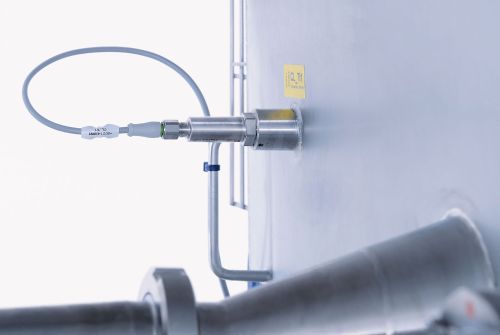
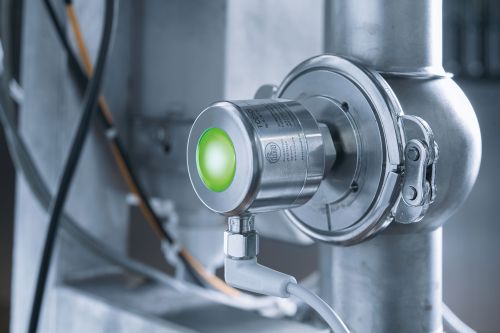
Picture 1: Temperature sensors type TA monitor the required temperature values in the cooker as well as in the cooling bath. Picture 2:Will be used in future by staedler: The temperature sensor TCC is self-monitoring which means that calibration intervals can be extended. Deviations in accuracy are recognised automatically and signalled using a switching signal and LED.
For these critical points staedler relies on temperature sensors type TA2502 from ifm. These sensors have a highly accurate, fast response Pt1000-measuring element covering a wide temperature range of -50 … 200 °C. Also the sensors have a high repeatability and long-time stability which are pre-requisites for optimum and stable product quality.
In the future staedler plans to use the self-monitoring temperature sensors type TCC from ifm to monitor these points. The special feature of this unit: It has two independent measuring elements with opposing temperature characteristics that counteract each other. Deviations in accuracy are thus recognised immediately and signalised by alarm switching signals. They are also clearly visualized via a LED directly on the unit. This simplifies reliable product quality enormously, as between calibration intervals the temperature is safe at all times so long as the sensor does not detect a drift which it then signals. With other industrial temperature sensors deviations in temperature or a drift can occur even a day after calibration has taken place. They are not recognized and only detected during the next calibration. Worst case would be an expensive product recall which would have a negative effect on the manufacturer’s reputation.
Monitoring CIP-cleaning process with conductivity
After each production charge the system undergoes a CIP-cleaning process. A separate pump is used to rinse the product lines with alkaline and acidic cleaning agents. They are then rinsed with clear water before production is restarted. During this process the ifm conductivity sensor LDL200 plays an important role. Based on precise conductivity measurement it is possible to confirm if the line contains a cleaning agent and at which concentration. According to the measurement values the control system recognizes, for example, if further cleaning agents are to be added or if the pre-, intermediate and final rinsing has taken place. The final stage of the cleaning process is rinsing with clear water. Only when the exact conductivity of the final rinsing water is reached, is the system then released for production. This ensures clear phase separation during the CIP-process.
Simultaneous to the conductivity, LDL200 measures the medium temperature and transfers the values using the communication protocol IO-Link to the control system. This is also used to control the heat exchanger to ensure that it always has sufficient energy to regulate the temperature of the boiling water.
Level at a glance
The system has two large water tanks: The bath with the hot water and the cooling bath at the end of the process. Pressure sensors are installed at the bottom of each tank. They are used to measure the hydrostatic pressure. The ifm sensors which are used have an ideal pressure range 100 mbar … 2.5 bar. They determine the exact level and are used to regulate it. It is therefore possible to avoid the tank overflowing when it is refilled with water.
Detect water supply
Water is lost during the cooking process. One reason being that the product itself, in this case spaetzle, absorbs water, and also water escapes in the form of steam during the cooking process. For those reasons water has to be continuously added.
Lukas Staedler: „We use the magmeter SM2100 from ifm to regulate the replenishment of fresh water. It continuously measures the flow during the cooking process.
This takes place in cooperation with level sensors. When the level sensors signal that the level of the water is decreasing then fresh water is added and the flowmeter determines how much water has been lost, having been absorbed by the product or as steam.
Water is also lost during the removal of residual sludge. Used water is drained off and fresh water is added. This takes place during a time factor which is determined by the recipe. Also in this case the SM is used to measure the quantity of water which is to be added.“
The flowmeter also plays an important part during the cleaning process as it monitors the quantity of fresh water used for rinsing. In doing so it provides transparency throughout the entire cooking process.
Position monitoring with inductive sensors
Inductive sensors for position detection are also installed. Even though they are not directly part of the cooking process they have an important monitoring function. The cooling band with which the product is transferred to and from the cooling bath can be lifted out of the bath using a lift for the purpose of being cleaned manually. Two inductive sensors are used for non-contact detection of the top and bottom position. They also ensure that the system can only be restarted if the band is in the correct lower position.
A third inductive sensor is mounted on the slot screen. This is also removed for manual cleaning purposes. The sensor checks if is correctly fitted before production can be resumed.
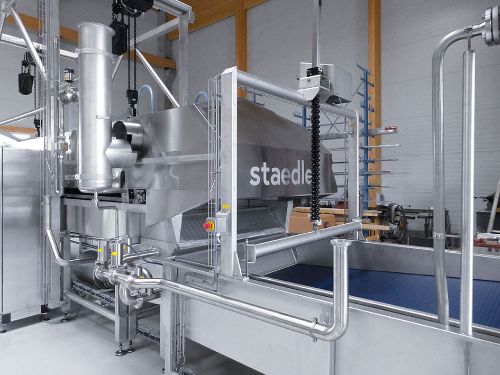
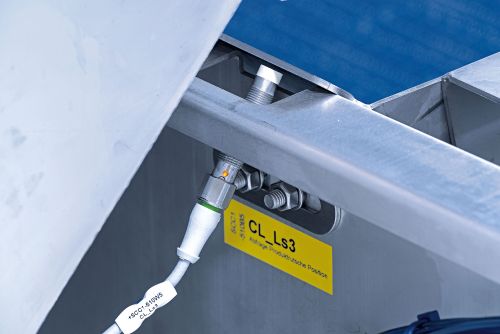
Picture 1: The cooling band can be lifted out for cleaning purposes using a pulley. Inductive sensors are used to detect the relevant top and bottom position. Picture 2: After the slot screen has been cleaned manually and returned in place, production can only be resumed after it has been released by the inductive sensor.
Sensor communication using IO-Link
All sensors are connected to the control system via IO-Link. This digital communication protocol transfers the measuring values to the control system in digital form. This means that measurement errors caused by conversion loss are reliably avoided. However, IO-Link can do more.
Lukas Staedler: „Each sensor which is a CCP sensor has to be checked on an annual or six-monthly basis. The temperature sensors are placed in a reference temperature liquid and calibrated. We calibrate temperature sensors using IO-Link.“
With the conductivity sensor LDL we use both process values, temperature and conductivity over a single wire. The flowmeter SM transfers the counter values as well as the current velocity over one output via IO-Link to the control system.“
In reply to the question whether IO-Link simplifies automation, Lukas Staedler has a clear opinion: „Basically automation means more effort but IO-Link provides a definite added-value. It is possible to transfer several signal values over one wire. That saves mounting costs. Or if we look at the temperature sensors: Calibration takes place directly on the sensor and not as before using corrective values in the control system. This simplifies programming the controls. All in all the advantages of IO-Link are greater by far.“
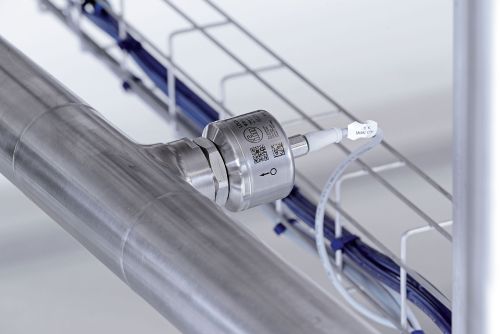
The conductivity sensor LDL200 reliably recognizes if clear water or cleaning detergents from the CIP process are in the lines. Simultaneously it also measures the temperature and transfers both measuring values using IO-Link to the control system.

Pressure sensors type PM use the hydrostatic pressure to detect the level in the cooker and the cooling bath.
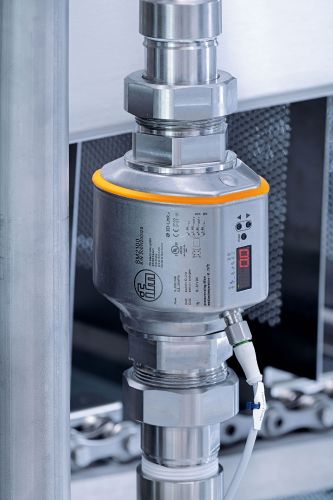
The magmeter SM2100 is used to detect the current flow velocity as well as the total quantity of the feed water supply. Both values are transferred using IO-Link to the control system.
Conclusion
staedler is convinced by the automation solutions provided by ifm. Lukas Staedler summarizes: „We are very satisfied with ifm. We have also used ifm in earlier projects. The reason being that ifm has a comprehensive sensor concept, from inductive sensors, magmeters, temperature sensors, pressure sensors through to conductivity measurement. In short: We can cover all our needs in the system with ifm sensors. A further reason is that the price performance ratio is right. The sensors make sense for this type of system and are also affordable. We will also use ifm for future projects.”


